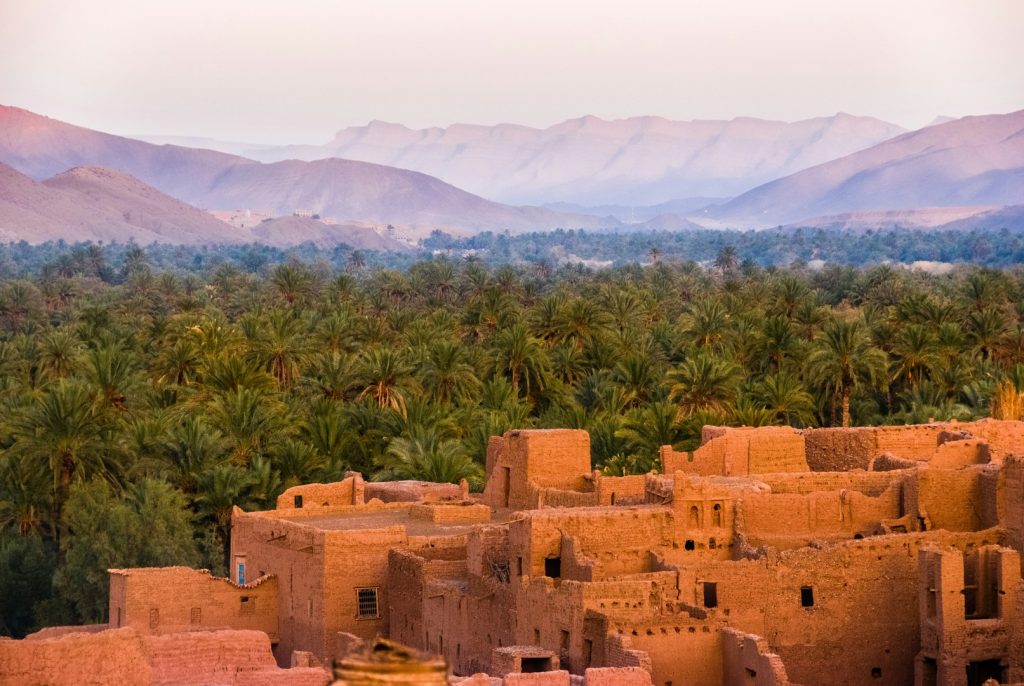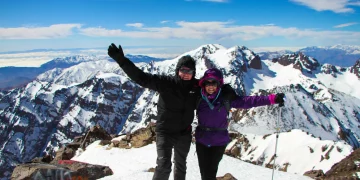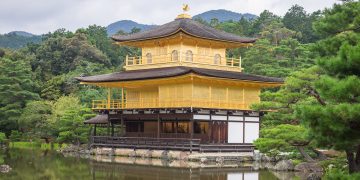Morocco is a land of vibrant contrasts, where ancient traditions and modernity coexist in a harmonious dance. With its unique blend of Arab, Berber, French, and Spanish influences, Morocco’s cultural landscape is as diverse as it is rich. From the bustling souks of Marrakesh to the tranquil beauty of the Atlas Mountains, the country offers a tapestry of experiences that showcase its history, art, music, cuisine, and traditions.
For travelers seeking an immersive experience, Morocco provides an opportunity to step into a world that feels both timeless and contemporary. Whether you’re exploring ancient medinas, staying in traditional riads, or witnessing local ceremonies, Morocco is a place where culture isn’t just something to observe—it’s something to experience, participate in, and live.
In this guide, we’ll explore the best ways to dive into Morocco’s rich cultural heritage, from iconic cultural experiences and festivals to practical tips on how to respectfully engage with the locals.
1. Overview of Morocco’s Unique Cultural Landscape
Morocco’s culture is a fascinating blend of influences from Africa, the Middle East, Europe, and beyond. The country has long served as a crossroads for traders, travelers, and conquerors. This mix of influences has created a cultural landscape unlike any other, characterized by a deep respect for tradition while embracing modernity in various aspects of life.
Moroccan culture is heavily shaped by Islamic traditions, yet its Berber (Amazigh) roots are also deeply embedded in the country’s social fabric. These Berbers are the indigenous people of North Africa, and their culture and language have influenced architecture, art, cuisine, and even daily life across Morocco. The Arab influence, brought through the Islamic expansion, shaped Morocco’s urban development, language (Arabic and Darija), and its social structures. Additionally, the French colonial period (1912-1956) introduced Western-style education, infrastructure, and modern conveniences, leaving a lasting imprint on Moroccan cities.
This blend of indigenous, Arab, and European influences gives Morocco its unique cultural identity. Visitors can expect to experience traditional music, dance, food, clothing, and architecture, alongside contemporary urban life in cities like Casablanca, Marrakesh, and Rabat.
2. Key Cultural Experiences: Traditional Riads, Souks, and Local Ceremonies
Staying in a Traditional Riad
A riad is more than just a place to stay—it’s an authentic experience of Moroccan hospitality. These traditional houses, often located in the heart of a city’s medina, are built around a central courtyard, often featuring lush gardens, fountains, and intricately tiled floors. Staying in a riad offers an intimate way to experience Moroccan culture and architecture. The peaceful and serene environment contrasts with the busy streets outside and gives travelers a taste of the country’s traditional residential life.
Riads have become synonymous with the experience of Moroccan luxury, offering beautiful decor, traditional Moroccan furnishings, and delicious homemade meals. Many riads also offer private cooking classes, where travelers can learn to prepare Moroccan delicacies like tagine and couscous. Some riads even provide guided tours of the medina, allowing visitors to explore the winding alleyways and hidden gems of Morocco’s historic cities.
Exploring the Souks
The souks, or traditional markets, are among the most iconic aspects of Moroccan culture. These vibrant bazaars are a feast for the senses, with rows upon rows of stalls selling everything from spices and textiles to jewelry and ceramics. Morocco’s souks are not just places to shop—they are cultural hubs where local artisans, craftsmen, and traders showcase their skills, and where travelers can experience the country’s living traditions.
Each city’s souk has its own character. In Marrakesh, the famous Souk Semmarine is a labyrinth of narrow alleys where you can find everything from handwoven carpets to intricate metalwork. In Fez, the tannery district is known for its centuries-old leather-making techniques, where workers still use traditional methods to create beautiful leather goods. Haggling is a key part of the souk experience, so visitors should come prepared to negotiate prices with sellers, which is considered a respectful and expected part of Moroccan commerce.
Local Ceremonies and Traditions
Morocco’s cultural landscape is also shaped by its vibrant local ceremonies. Whether it’s a wedding, a religious festival, or a communal gathering, these events offer a window into the heart of Moroccan life. Henna ceremonies are a popular pre-wedding tradition, where intricate designs are painted on the hands and feet of the bride. Similarly, weddings in Morocco are grand affairs, often lasting for several days, and are characterized by traditional music, dancing, and sumptuous feasts.
Another example of Moroccan tradition is the imam-led prayers at mosques, which are an integral part of daily life. Visitors who are respectful and observant may have the opportunity to witness these sacred ceremonies, though it is important to adhere to local customs, especially when visiting religious sites.
3. Practical Travel Tips for Engaging with Moroccan Culture
While Morocco is a welcoming country, it is essential to approach your travels with an awareness of cultural differences and sensitivities. Here are some practical tips for engaging respectfully with Moroccan culture:
Respect Local Customs and Traditions
- Greetings: In Morocco, greetings are an important part of social interaction. A handshake is customary, and it’s polite to greet people with “As-salamu alaykum” (peace be upon you) if you’re speaking Arabic, or “Sbah lkhir” (good morning) in Darija, the Moroccan Arabic dialect. When greeting someone, it is considered respectful to inquire about their health and family.
- Dress Modestly: Morocco is a conservative country, and dressing modestly is essential, especially for women. It is best to avoid wearing shorts or revealing clothing in public. Long pants or skirts and tops with sleeves are recommended, particularly when visiting religious sites. The djellaba (a loose-fitting robe worn by both men and women) is traditional attire that visitors can wear if they wish to immerse themselves in local fashion.
- Public Behavior: Public displays of affection are not common in Morocco, especially in rural areas. It’s advisable to avoid holding hands, hugging, or kissing in public. Also, be mindful of local attitudes toward alcohol consumption—though alcohol is available in most tourist areas, it’s not widely consumed by locals.
Photography Etiquette
Moroccans are generally friendly and welcoming to tourists, but always ask permission before photographing people, especially in rural areas or during religious ceremonies. Some locals, particularly women, may not want to be photographed, so it’s essential to respect their wishes.
Bargaining and Haggling
In the souks and markets, haggling is not only acceptable but expected. Start by offering a price lower than what you’re willing to pay, and work your way up gradually. Be polite, patient, and cheerful—it’s all part of the fun. If you’re not interested in an item, simply walk away with a smile. It’s important to remember that bargaining is a social activity, not an adversarial one.

4. Festivals to Attend: Ramadan, the Fez Festival of World Sacred Music, and More
Morocco’s festivals are a spectacular reflection of its diverse cultural and religious heritage. Visiting Morocco during a festival provides an opportunity to witness the country’s traditions in their full splendor.
Ramadan
Ramadan is the holiest month of the Islamic calendar and is observed by Muslims worldwide, including in Morocco. During this month, Muslims fast from dawn to sunset, refraining from eating, drinking, and smoking. If you are traveling during Ramadan, you’ll notice a different pace of life: many businesses may close during the day, and restaurants may not serve food in public until after sunset.
The evening meal, iftar, is a communal event, and many Moroccans invite friends, family, and even tourists to join in breaking the fast. If you’re lucky enough to be invited, it’s an experience not to be missed.
Ramadan culminates in the celebration of Eid al-Fitr, a joyous festival that marks the end of fasting. This festival is characterized by large family gatherings, feasts, and special prayers at the mosque. It’s one of Morocco’s most important celebrations, and experiencing it firsthand is an unforgettable cultural experience.
Fez Festival of World Sacred Music
Held annually in the city of Fez, this festival is one of the most significant cultural events in Morocco. The Fez Festival of World Sacred Music celebrates spiritual music from across the globe, attracting artists from all religions and backgrounds. The performances take place in historic venues, including the Bou Jeloud Gardens and the Al-Qarawiyyin University, the oldest continuously operating degree-granting university in the world. The festival features both traditional Moroccan music and international spiritual music, providing a unique platform for cultural exchange.
Marrakesh Popular Arts Festival
The Marrakesh Popular Arts Festival is another key cultural event that showcases Morocco’s rich artistic heritage. Held in the summer, it celebrates Moroccan music, dance, and crafts, with performances and exhibits throughout the city. Traditional arts like gnawa music, belly dancing, and storytelling take center stage, creating a lively and immersive cultural atmosphere.
5. How to Dress and Behave Respectfully When Interacting with Locals
As mentioned earlier, modesty is key in Moroccan culture. This applies not just to clothing, but also to how you interact with locals. Always be polite, avoid interrupting conversations, and show genuine interest in learning about the culture. Moroccan people are generally very proud of their heritage and enjoy sharing their traditions
with respectful visitors.
When visiting religious sites, such as mosques or tombs, ensure that you remove your shoes before entering. It is also important to observe silence or speak in hushed tones as a sign of respect.
Conclusion
Morocco is a country where culture is not just something to observe—it’s something to live and experience. From staying in traditional riads to exploring bustling souks and attending vibrant festivals, Morocco offers a rich cultural tapestry that is bound to captivate any traveler. By respecting local customs, engaging thoughtfully with locals, and immersing yourself in the country’s traditions, you can gain a deeper understanding of what makes Morocco truly unique.





















